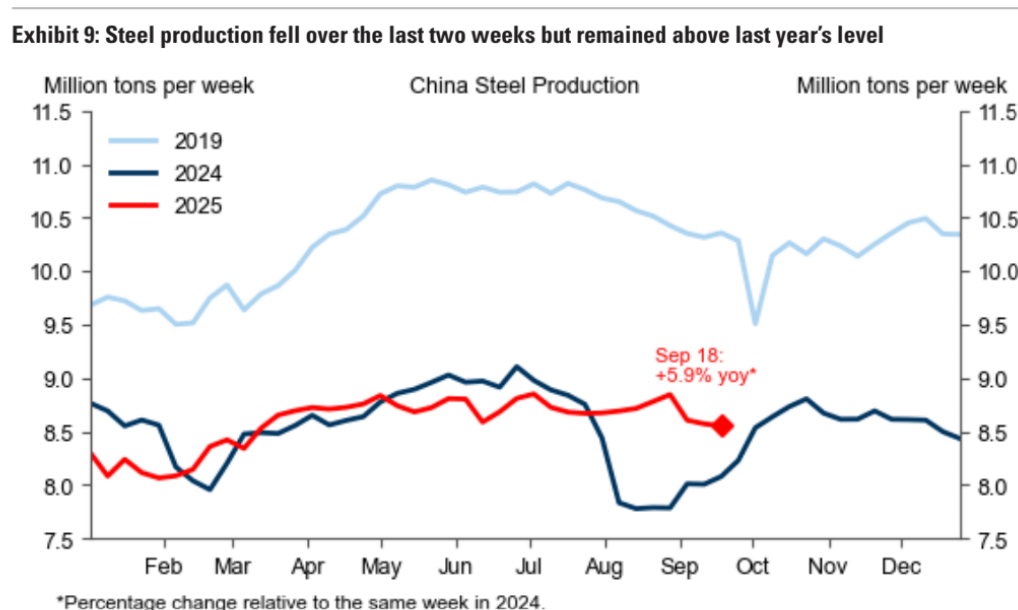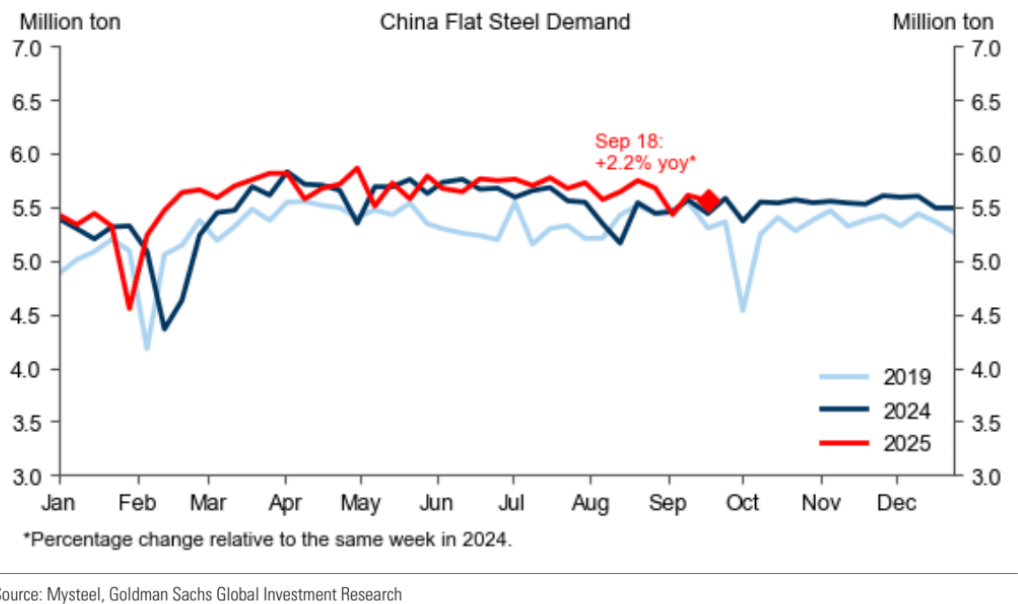The ferrous complex plods on. Caught between the approach of Simandou, Capanema, Gara Gjeblet on one hand and the shutdown of Chinese green steel on the other.

The balance is unusually solid blast furnace output for the season.

Honestly, if you had shown me that chart in 2019, I would have told you iron ore would be at $20. Indeed, I did.
The thing is, the huge drop in output has been shifted by product type and policy into steel recycling and away from iron ore-intensive blast furnaces.
Flat steel products predominate in blast furnaces, and production has actually grown a little as headline collapsed.

There are moves in Bejing to nudge against this, according to ANZ:
Iron ore futures gained as China reiterated its desire to tackle overcapacity in its steel industry. The Ministry of Industry and Information Technology released a plan to cap the annual growth of the steel sectors’ added value to around 4% in 2026 and 2027.
The plan also prohibits steelmakers from adding new capacity and requires companies to accelerate the elimination of outdated facilities, particularly blast furnaces and convertors.
The prospect of less crude steel hitting the market has helped lift steel prices and provided headroom for iron ore prices to rise.
This is bad for iron ore to the extent that it is relevant; it is a vague gesture at increasing recycling. 4% value-added could mean anything.
Basically, Beijing has been happy to destroy the planet with dirty steel and still largely is.
This leaves the looming supply glut as the principal downside risk to iron ore prices.
It will be material, and because it is all high-grade ore, supplanting low-grade, it will shutter greater volumes than at the headline level.
It may also finally lend some momentum to Chinese steel decarbonisation.

